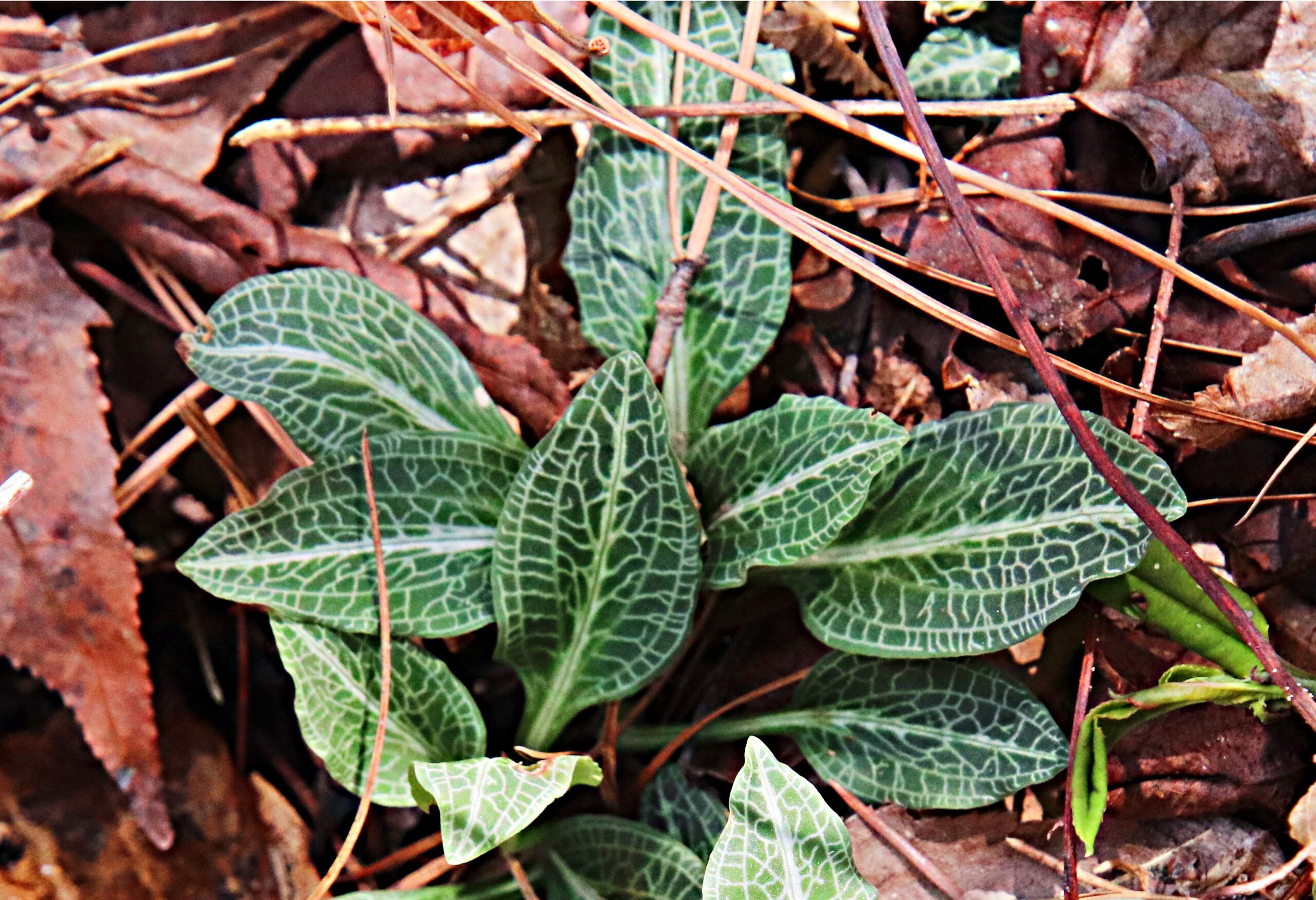Can you guess what is pictured in photo below?

The answer to last week’s mystery is downy rattlesnake plantain, Goodyera pubescens, pictured below:

Downy rattlesnake plantain is not a true plantain, but an evergreen herbaceous perennial in the orchid family. It is a native of dry to mesic woodlands.
The white leaf-markings resemble the skin of some rattlesnakes, and the flower stalks are covered with fine, downy hairs. This plant is pollinated by bees. The sticky pollen of the flower is carried by the bee wherever it happens to attach to the bee – face, eyes, legs, body, etc.
The roots of the downy rattlesnake plantain have a mycorrhizal relationship with fungi that assists in the plant getting moisture and nutrients in a process typical of orchids.
The plant provides products of its photosynthesis to feed the fungus. It spreads by rhizomatous off-sets. A new rosette of leaves may not bloom for several years.
The symbiotic fungi are sensitive to soil compaction, fertilizer, and fungicides. The loss of associated fungi during transplantation inhibits the ability to transplant wild orchids, such as downy rattlesnake plantain, successfully.
Despite being listed as endangered in Florida and exploitably vulnerable in New York, downy rattlesnake plantain is one of the most common orchid species native to the eastern United States.
It was named the 2016 wildflower of the year.
Mystery Monday is sponsored by the Spy Newspapers and Adkins Arboretum.



Write a Letter to the Editor on this Article
We encourage readers to offer their point of view on this article by submitting the following form. Editing is sometimes necessary and is done at the discretion of the editorial staff.